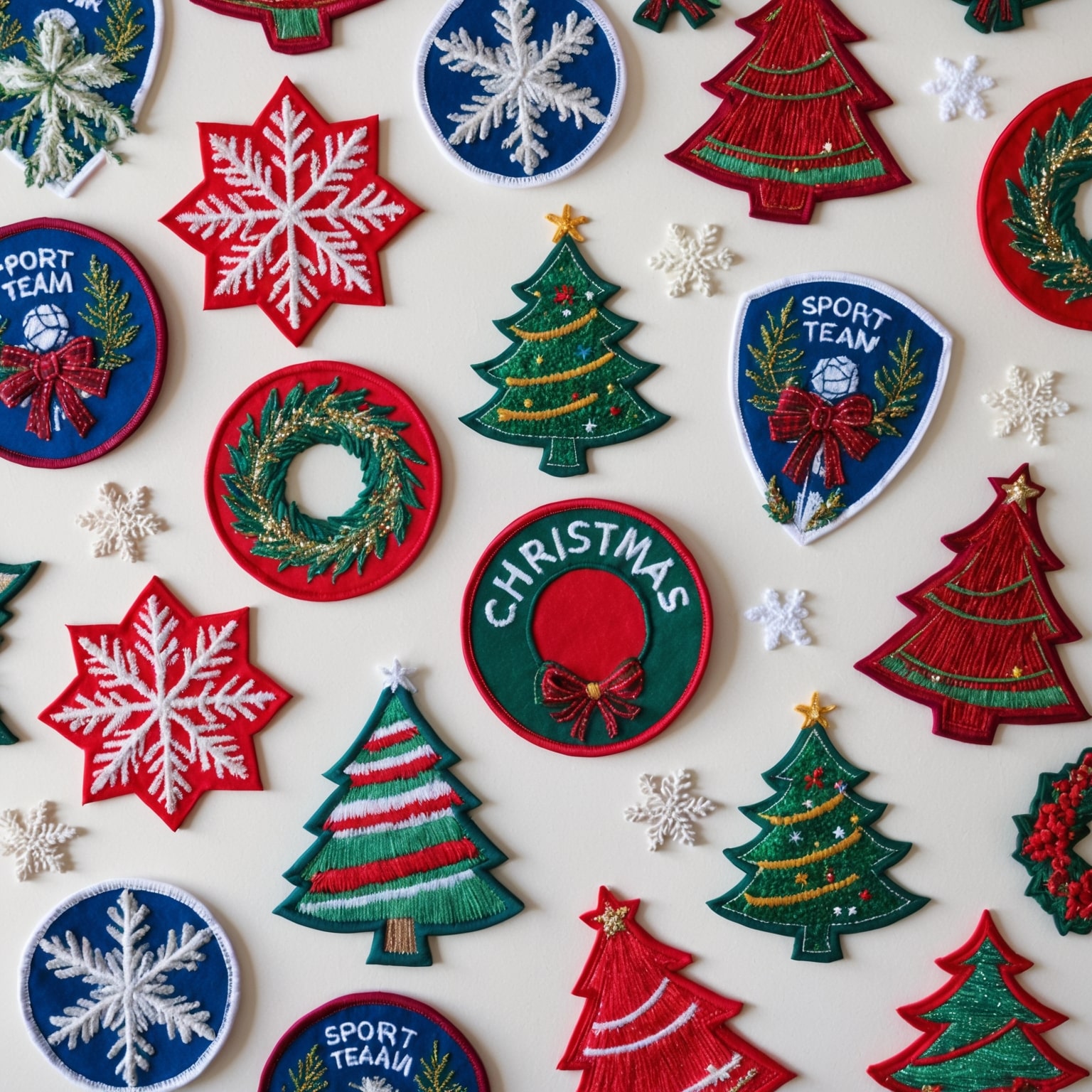Military patches have long served as symbols of identification, pride, and camaraderie within armed forces around the world. These embroidered insignias, worn on uniforms, carry a rich history that reflects the evolution of military traditions, technology, and culture. Over the years, military patches have evolved from simple unit identifiers to complex symbols with deep historical significance. Today, they are not only cherished by military personnel but also by historians and collectors who recognize their value as artifacts of military history. This article explores the fascinating journey of historical military patches from war zones to museums, highlighting their origins, evolution, and significance.
Historical military patches are more than just decorative pieces on uniforms; they are emblems of honor, history, and identity. These patches, often intricately designed and richly symbolic, tell stories of bravery, camaraderie, and the unique characteristics of military units. From the trenches of World War I to modern-day peacekeeping missions, military patches have been a constant presence, evolving in design and significance.
The journey of historical military patches from practical identification tools to collectible items in museums and private collections is a reflection of their enduring appeal and cultural importance. As symbols of military heritage, these patches offer insights into the history of armed forces, the evolution of military tactics and technology, and the shared experiences of those who serve.
This article delves into the evolution of historical military patches, tracing their origins, development, and the various roles they have played throughout history. We will explore the different types of military patches, the symbolism behind their designs, and their transition from active use in the field to cherished artifacts in museums. By examining the significance of these patches, we aim to highlight their role as both functional items and cultural treasures.
1. Origins and Early History of Military Patches
The use of military insignia and symbols can be traced back to ancient times, where they were used to identify soldiers and units. However, the modern concept of embroidered military patches emerged in the early 20th century, coinciding with the industrialization of textile production and the formalization of military uniforms.
Ancient and Medieval Predecessors
In ancient civilizations, such as Rome and Greece, soldiers often wore distinctive clothing or carried banners that identified their allegiance. These early forms of identification were crucial in maintaining unit cohesion and distinguishing friend from foe on the battlefield. During the medieval period, heraldic symbols and coats of arms served a similar purpose, often displayed on shields, banners, and surcoats.
While these early symbols were not historical military patches in the modern sense, they laid the groundwork for the use of visual identifiers in military contexts. The concept of using specific symbols to represent different groups or units continued to evolve, eventually leading to the development of embroidered insignia.
The Birth of Modern Military Patches
The modern era of military patches began during World War I. The growing complexity of military organizations and the need for efficient identification led to the widespread adoption of embroidered patches. These patches were initially simple in design, often featuring basic symbols and colors to represent different units or branches of the military.
One of the earliest examples of a military patch is the British Expeditionary Force’s “Red Chevron,” which was worn by soldiers who had served in France. This simple design consisted of a red chevron on a khaki background, signifying the wearer’s service in a specific theater of war. Similarly, the United States Army introduced patches for its divisions, with the 81st Division’s “Wildcat” patch being one of the first to be officially authorized.
The use of patches quickly spread across military forces worldwide, becoming an essential part of the uniform. They served not only as practical identifiers but also as symbols of pride and belonging. As the war progressed, patches became more elaborate, incorporating unique designs and colors to represent specific units, divisions, and corps.
The Role of Patches in World War II
World War II marked a significant expansion in the use of military patches. The conflict’s global scale and the diversity of forces involved led to a proliferation of patches, each reflecting the unique identity and mission of different units. The United States military, in particular, saw a dramatic increase in the variety and complexity of patches, with each division, regiment, and specialty group developing its own distinctive insignia.
These patches often included elements that symbolized the unit’s heritage, mission, or geographical origin. For example, the 101st Airborne Division’s “Screaming Eagle” patch featured an eagle head, representing the unit’s airborne capabilities and its association with the state of Kentucky. Similarly, the 1st Infantry Division’s “Big Red One” patch featured a simple red numeral “1,” symbolizing the division’s status as the first in the U.S. Army.
Patches from this era are highly sought after by collectors and historians due to their historical significance and unique designs. They provide a visual record of the diverse units that participated in the war and the various roles they played.
2. The Evolution and Varieties of Military Patches
As military operations and technology evolved, so did the design and function of military patches. The post-World War II era saw further diversification in the types of patches used by military forces, reflecting changes in military structure, technology, and culture.
Branch and Unit Patches
One of the most common types of military patches is the branch or unit patch. These patches are worn by members of specific branches of the military, such as the Army, Navy, Air Force, or Marine Corps, as well as by individual units within those branches. Branch patches typically feature symbols associated with the branch’s identity, such as the anchor for the Navy or the eagle for the Air Force.
Unit patches, on the other hand, often highlight the unique characteristics of individual units. For example, special forces units may have patches that reflect their elite status and specialized training. The Navy SEALs, for instance, have a trident symbol on their patches, representing their capabilities in sea, air, and land operations.
Specialty and Qualification Patches
In addition to branch and unit patches, military personnel can earn specialty and qualification patches. These patches signify specific skills, training, or achievements. For example, parachutist badges, also known as “jump wings,” are awarded to soldiers who complete airborne training. Similarly, the Expert Infantryman Badge (EIB) is awarded to infantry soldiers who demonstrate proficiency in various infantry skills.
These patches not only recognize individual accomplishments but also serve as a form of professional identity. They are worn with pride and often become a significant part of a service member’s uniform.
Deployment and Mission Patches
Deployment and mission patches commemorate specific operations or missions. These patches often include the name and date of the mission, along with symbols or imagery relevant to the operation. For example, patches from the Gulf War might feature a desert landscape, while those from peacekeeping missions might include symbols of peace, such as doves or olive branches.
These patches serve as mementos of specific experiences and deployments, providing a tangible connection to significant events in a service member’s career. They are often collected and displayed by veterans as a way to remember their service and the camaraderie of their fellow soldiers.
Morale and Commemorative Patches
Morale patches are a more informal type of military patch, often created and worn unofficially to boost morale or commemorate specific events. These patches can include humorous or satirical elements, inside jokes, or references to popular culture. While not officially sanctioned, they are popular among military personnel as a way to express individuality and foster camaraderie.
Commemorative patches, on the other hand, are often created to honor significant anniversaries, reunions, or the legacy of a particular unit or operation. For example, veterans’ groups might produce patches to mark the anniversary of a major battle or the reunion of a specific division. These patches serve as a way to honor the past and keep the memory of significant events alive.
3. Symbolism and Design in Historical Military Patches
The design of military patches is rich with symbolism, often reflecting the values, mission, and history of the unit or branch they represent. Understanding the elements of patch design can provide deeper insights into the culture and traditions of military organizations.
Color Symbolism
Colors play a crucial role in military patch design, often carrying specific symbolic meanings. For example, red can symbolize courage, sacrifice, or the blood shed by soldiers in battle. Blue is commonly associated with loyalty, trust, and the military’s connection to the sky or sea. Gold or yellow often represents honor and excellence.
The choice of colors can also reflect the environment or conditions of a specific unit’s operations. For example, desert or camouflage colors might be used for units deployed in arid regions, while blue and white could be used for naval units. The use of color in patch design helps convey the identity and mission of the unit.
Iconography and Symbols
The imagery used in military patches often includes a variety of symbols, each with its own significance. Common symbols include:
- Eagles: Representing strength, freedom, and vigilance.
- Stars: Often indicating rank, excellence, or the national flag.
- Swords or Weapons: Symbolizing combat readiness and defense.
- Shields: Representing protection and defense.
- Animals: Such as lions, wolves, or bears, symbolizing bravery, ferocity, or loyalty.
These symbols are carefully chosen to reflect the characteristics and values of the unit. For example, a reconnaissance unit might use an owl to symbolize wisdom and observation, while an armored unit might use a tank or a dragon to represent strength and power.
Text and Inscriptions
Text and inscriptions on military patches often include the unit’s name, motto, or a significant date. Mottos are particularly important, encapsulating the unit’s ethos and mission in a few words. For example, the U.S. Army’s 82nd Airborne Division has the motto “All the Way,” reflecting its commitment to airborne operations and excellence.
Inscriptions can also include the designation of the unit, such as “1st Battalion” or “3rd Marine Regiment,” providing additional context about the unit’s structure and role. The use of text in patch design helps to clearly identify the unit and convey key information about its identity and mission.
Artistic Styles and Influences
The artistic style of military patches can vary widely, reflecting both traditional and contemporary influences. Some patches feature detailed and realistic depictions, while others use more abstract or stylized designs. The choice of style can depend on factors such as the unit’s culture, the preferences of the designers, and the intended message of the patch.
For example, some special forces units might use minimalist designs that emphasize secrecy and discretion, while ceremonial or historical units might use elaborate designs that reflect their heritage. The artistic choices in patch design can add depth and meaning to the symbols and elements used.
4. From War Zones to Museums: The Journey of Historical Military Patches
The journey of military patches from active service in war zones to display in museums reflects their enduring significance as symbols of military history and heritage. Over time, these patches have transitioned from practical identifiers to collectible items and cultural artifacts.
Collecting and Preserving Military Patches
Collecting military patches has become a popular hobby among veterans, historians, and enthusiasts. These patches serve as tangible reminders of military service, historical events, and the evolution of military units. Collectors often seek patches from specific wars, units, or time periods, valuing them for their historical significance and unique designs.
The preservation of military patches involves careful attention to their condition and provenance. Collectors and museums often work to authenticate and document the history of each patch, including information about the unit, the period of use, and any notable events associated with it. Proper storage and display techniques are also important to prevent damage and deterioration.
Military Patches in Museums
Museums around the world have recognized the cultural and historical value of military patches. Many museums dedicated to military history include exhibits featuring patches from various branches, units, and conflicts. These exhibits offer visitors a glimpse into the rich tapestry of military history, highlighting the diverse identities and traditions of armed forces.
For example, the Smithsonian National Museum of American History in Washington, D.C., features a collection of military patches from different branches of the U.S. Armed Forces. The Imperial War Museum in London also has a collection of British military patches, showcasing the evolution of British military insignia over time.
These museum exhibits not only preserve the physical artifacts but also provide educational opportunities for the public. They offer insights into the history of military units, the symbolism behind their patches, and the experiences of those who served. By displaying these patches, museums honor the legacy of military personnel and the sacrifices they made.
The Continued Relevance of Military Patches
Despite their historical roots, military patches remain relevant today. Modern military units continue to use patches as symbols of identity, pride, and camaraderie. The tradition of designing and wearing patches has evolved with technological advancements and changing military strategies, but the core purpose remains the same: to honor and represent the unique identity of each unit.
In contemporary military operations, patches serve not only as identifiers but also as morale boosters. They remind service members of their shared mission and the values they uphold. The continued use of patches ensures that this rich tradition remains alive, connecting past and present generations of military personnel.
Conclusion
Historical military patches are more than just decorative elements on uniforms; they are symbols of identity, heritage, and honor. From their origins in the early 20th century to their continued use today, these patches have evolved to reflect the diverse identities and missions of military units. They carry deep symbolic meaning, encapsulating the values, history, and experiences of those who serve.
The journey of military patches from war zones to museums highlights their enduring significance as cultural artifacts. Collectors and museums play a vital role in preserving these patches, ensuring that the stories and history they represent are not forgotten. Through careful preservation and display, these patches continue to educate and inspire future generations, offering a tangible connection to the past.
As symbols of military history and heritage, historical military patches remind us of the sacrifices made by service members and the enduring values of courage, honor, and duty. Whether worn on the battlefield or displayed in a museum, these patches serve as a powerful testament to the legacy of those who have served in the armed forces. Their continued relevance in modern military culture ensures that this rich tradition will carry on, honoring the past and inspiring the future.
If you are interested in purchasing high-quality custom patches, feel free to call us at 1-877-503-8485 or fill out one of our FREE quotes here.




